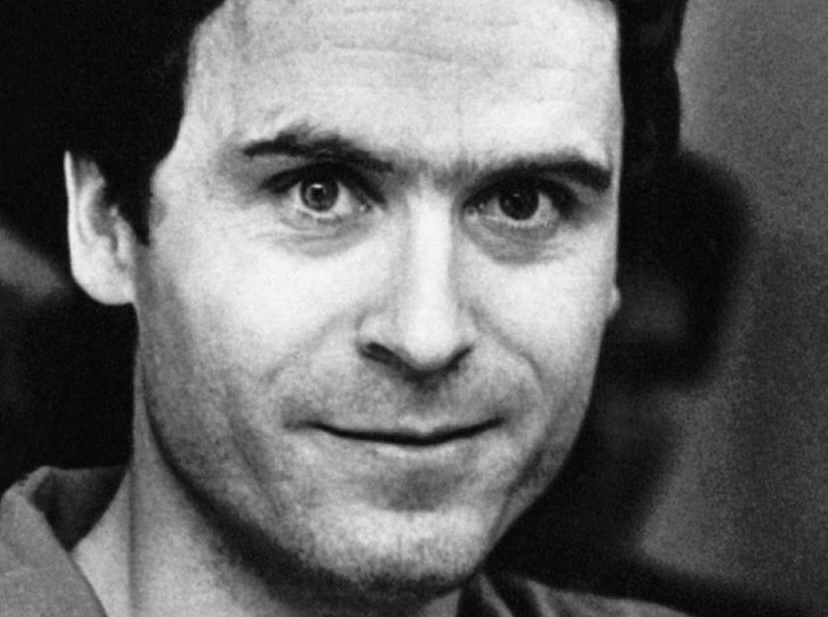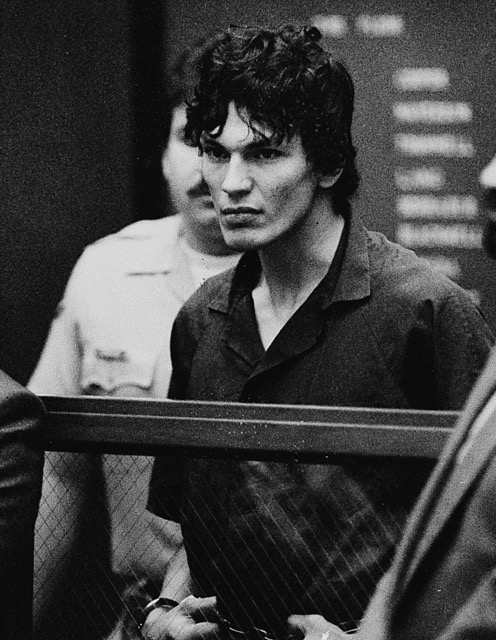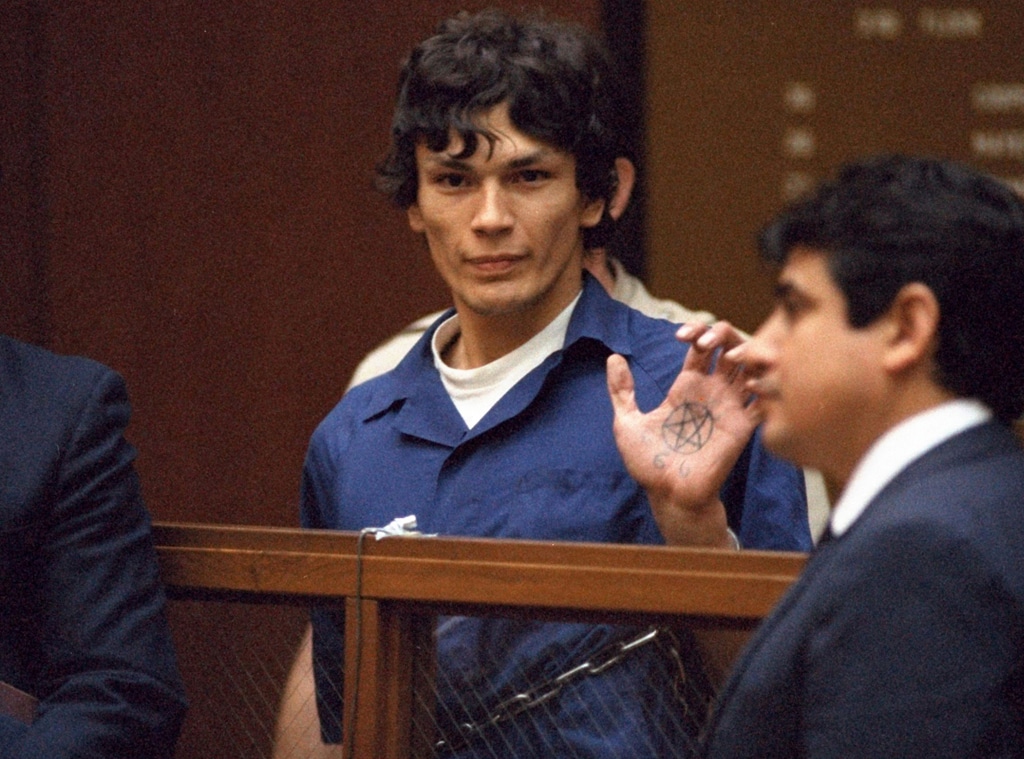Following up on Part 1 of our journey, we delve deeper into the chilling crimes of John Wayne Gacy, Ted Bundy, Aileen Wuornos, and Richard Ramirez.
Today’s Focus of Attention is reader-supported. We sometimes include products we think are useful for our readers. If you buy through links on this page, we may earn a small commission.
John Wayne Gacy: The Killer Clown Who Hid His Crimes Beneath the Surface

This sadist was responsible for the deaths of at least 33 young men and boys in the 1970s, burying most of them in the crawl space of his home.
Early Life
Born on 17th March 1942 in Chicago, Illinois, John Wayne Gacy grew up in a troubled and dysfunctional family.
His father, John Stanley Gacy, a mechanic and WWI veteran, struggled with alcoholism and was physically and emotionally abusive. Although his mother attempted to shield her children, she often ended up as the target of her husband’s violent rage.
At school, bullies targeted John because of his weight, sexually inappropriate acts with other boys, and his attraction to death and funerals.
Before graduation, he withdrew from his studies and moved around, taking various jobs while struggling to find stability in his life.
The Killer Clown
Gacy earned this moniker because he often performed as “Pogo the Clown” at community events such as children’s parties, fundraising gatherings, and hospital visits, donning a homemade costume and makeup.
He was so active in his neighbourhood that he joined civic organisations and served as a precinct captain for the Democratic Party – a public persona that allowed him to hide his dark secrets.
He found this activity a perverse pleasure, since some of those he entertained would later become his victims.

“Clowns can get away with murder.”
The Deadly Trap
Throughout his life, he bounced from job to job, but his most prominent and successful role was as a self-employed construction contractor. He established his own company, PDM Contractors, securing deals related to remodelling, repairs, and maintenance for both residential and commercial clients.
A good income let him buy a house and maintain a comfortable lifestyle, but also access to potential victims, such as young men who he hired to work for him.
Reign of Terror
Deception, torture, and cold-blooded murder defined John Wayne Gacy’s horrific crimes. All of his known brutal acts took place inside his ranch-style house at 8213 West Summerdale Avenue in Norwood Park Township, Illinois, a suburb of Chicago.
Between 1972 and 1978, he is believed to have claimed the lives of over thirty-three young men and boys, positioning him on the list of the most prolific serial killers in American history.
He enticed those he targeted under false pretences, offering construction work, money, or alcohol. One of his preferred tactics was a ‘rope trick’ – a gruesome game where he placed a rope around his victims’ necks and tightened it until they lost consciousness.
Defenceless, they were restrained with handcuffs, tortured, strangled, raped, and killed in Gacy’s crawl space. To speed up decomposition and to make more room in his private graveyard, this serial killer used lime. The excess bodies, as there were many, were disposed of in the Des Plaines River.
Of the 33 confirmed victims of John Wayne Gacy, 25 have been identified, while 8 still remain without a name.
Victims of John Wayne Gacy
| Timothy McCoy (3rd January 1972) | Stabbed and strangled. |
| John Butkovich (31st July 1975) | Strangled. Gacy lured him with a job offer. |
| Darrell Sampson (6th April 1976) | Strangled. Last seen leaving for a job interview with Gacy. |
| Randall Reffett (14th May 1976) | Strangled. Disappeared after leaving a school event. |
| Samuel Stapleton (14th May 1976) | Strangled. Last seen leaving a bus stop. |
| Matthew Bowman (5th July 1976) | Strangled. Vanished after leaving home to buy cigarettes. |
| Robert Gilroy (15th September 1976) | Strangled. Disappeared after leaving a pharmacy where he worked. |
| John Mowery (25th September 1976) | Strangled. Last seen leaving a bar. |
| Russell Nelson (17th October 1976) | Strangled. Disappeared after leaving a party. |
| Robert Winch (10th November 1976) | Strangled. Last seen leaving a gas station. |
| Tommy Boling (18th November 1976) | Strangled. Disappeared after leaving a bar. |
| David Talsma (9th December 1976) | Strangled. Last seen leaving a Christmas party. |
| William Bundy (11th December 1976) | Strangled. Disappeared after leaving a theatre. |
| Gregory Godzik (12th December 1976) | Strangled. Last seen leaving his workplace. |
| John Szyc (20th January 1977) | Strangled. Last seen leaving his home. |
| Jon Prestidge (15th March 1977) | Strangled. Disappeared after leaving a restaurant. |
| Matthew Mihalik (12th May 1977) | Strangled. Last seen leaving a bowling alley. |
| Robert Donnelly (19th July 1977) | Strangled. Last seen leaving a hotel. |
| William Kindred (16th February 1978) | Strangled. Last seen leaving a bar. |
| Timothy O’Rourke (6th June 1978) | Strangled. Last seen leaving his apartment. |
| Frank Landingin (4th November 1978) | Strangled. Last seen leaving a pharmacy. |
| James Mazzara (24th November 1978) | Strangled. Last seen leaving his home. |
| Robert Piest (11th December 1978) | Strangled. His disappearance led to Gacy’s arrest. |
Gacy’s Capture and Execution
The investigation that led to Gacy’s arrest began on 11th December 1978, when 15-year-old Robert Piest disappeared after telling his mother he was going to talk to a contractor about a summer job.
The contractor was none other than John Wayne Gacy.
Detective Joseph Kozenczak from the Des Plaines PD quickly focused on Gacy, placing him under surveillance and eventually obtaining a search warrant.
Inside Gacy’s home, they found handcuffs, rope, a pharmacy receipt for chloroform, and a sickening odour of decomposition emanating from the crawl space beneath the house.
On 21st December, the police excavated and uncovered the first of many bodies buried in the makeshift graveyard. Gacy was straight away arrested.
His trial began on 6th February 1980 in Chicago, immediately becoming a media sensation because of the sickening specifics of his murderous acts. Gacy’s defence team entered a plea of not guilty due to mental disease or defect, but the jury didn’t buy the argument. He was convicted on 33 counts of murder, sentencing him to death.
John Wayne Gacy received a lethal injection on 10th May 1994 at the Statesville Correctional Centre in Crest Hill, Illinois.
In a chilling show of defiance, he stated,
“I should never have been convicted of anything more serious than running a cemetery without a licence.”
Ted Bundy: The Charismatic Killer

Ted Bundy, one of America’s most notorious serial killers, used his charm and intelligence as deadly weapons during a horrifying spree of murders that stretched across several states, claiming the lives of over 30 women between 1974 and 1978.
Let’s delve into the existence of this psychopath, whose beguiling facade masked unspeakable horrors.
Ted Bundy’s Early Life and Psychological Struggles
Born on 24th November, 1946, in Burlington, Vermont, Theodore Robert Bundy was raised by his grandparents under the illusion that they were his parents and his mother was his sister.
The truth, revealed years later, combined with being bullied at school and a tense relationship with his supposed ‘father,’ added fuel to the growing fire of psychological turmoil within him.
The Complex Persona of Ted Bundy
Bundy presented a multifaceted melting pot of charm, manipulation, and malevolence and could blend into society while harbouring a sinister alter ego.
Although his IQ was above average, ranging from 120 to 126, and he attended several universities, he never completed a degree, but his knowledge of law and psychology allowed him to manipulate both people and the legal system.
Before knowing the atrocities he’d committed, everyone found him to be charismatic, intelligent, and normal, psychopathic traits that turned him into a master manipulator and helped him evade suspicion and enabled his horrific acts for so long.
Magnetic Appeal
He wielded his uncanny ability to present himself as affable and even vulnerable; his smile was disarming, his voice smooth and reassuring. With every polite gesture and well-chosen word, he wove a web that drew people in, unaware of the dangers lurking beneath his friendly facade.
Like many serial killers, Bundy had an inflated sense of self-importance, believing he was smarter than everyone around him. This narcissism was clear in his trials, where he refused counsel and treated the proceedings as opportunities to showcase his intellect and ego.

But what made him a real danger to society was his loss of emotional connection and lack of empathy for others. This monstrous predator could kidnap, rape, beat, and kill, feeling no remorse whatsoever.
Bundy’s horrifying crimes were not just for the sake of committing them; he enjoyed the power and control when he was slowly strangling innocents and seeing how their lives vanished while prolonging their deaths.
A Trail of Blood
Bundy’s criminal career began in the 1970s.
He kidnapped, raped, battered, and murdered at least 30 young women and girls in various US states, including Washington, Oregon, Colorado, Utah, and Florida.
His abductions were meticulously crafted operations, each move calculated to perfection as the adrenaline of the hunt coursed through his veins.
Karen Sparks, an 18-year-old university student, was his first confirmed victim. On 4th January 1974, Bundy broke into her basement room, brutally beat her with a metal rod, and raped her.
She survived the attack but suffered severe injuries and permanent damage.
This list of known victims reflects only a part of his crimes, as authorities suspect there were more.
| # | Name | Date | Location | Fate |
|---|---|---|---|---|
| 1 | Karen Sparks (Joni Lenz) | January 4, 1974 | Seattle, Washington | Attacked, raped, survived (severe brain damage) |
| 2 | Lynda Ann Healy | February 1, 1974 | Seattle, Washington | Abducted, raped, killed |
| 3 | Donna Gail Manson | March 12, 1974 | Olympia, Washington | Abducted, presumed killed (body never recovered) |
| 4 | Susan Rancourt | April 17, 1974 | Ellensburg, Washington | Abducted, raped, killed |
| 5 | Roberta Kathleen Parks | May 6, 1974 | Corvallis, Oregon | Abducted, raped, killed |
| 6 | Brenda Carol Ball | June 1, 1974 | Burien, Washington | Abducted, raped, killed |
| 7 | Georgann Hawkins | June 11, 1974 | Seattle, Washington | Abducted, raped, killed |
| 8 | Janice Ott | July 14, 1974 | Issaquah, Washington (Lake Sammamish State Park) | Abducted, raped, killed |
| 9 | Denise Naslund | July 14, 1974 | Issaquah, Washington (Lake Sammamish State Park) | Abducted, raped, killed |
| 10 | Nancy Wilcox | October 2, 1974 | Holladay, Utah | Abducted, presumed killed (body never recovered) |
| 11 | Melissa Smith | October 18, 1974 | Midvale, Utah | Abducted, raped, killed |
| 12 | Laura Aime | October 31, 1974 | Lehi, Utah | Abducted, raped, killed |
| 13 | Carol DaRonch | November 8, 1974 | Murray, Utah | Abducted, escaped (survived) |
| 14 | Debra Kent | November 8, 1974 | Bountiful, Utah | Abducted, killed (partial remains found) |
| 15 | Caryn Campbell | January 12, 1975 | Snowmass, Colorado | Abducted, raped, killed |
| 16 | Julie Cunningham | March 15, 1975 | Vail, Colorado | Abducted, raped, killed |
| 17 | Denise Oliverson | April 6, 1975 | Grand Junction, Colorado | Abducted, presumed killed (body never recovered) |
| 18 | Lynette Culver | May 6, 1975 | Pocatello, Idaho | Abducted, raped, killed |
| 19 | Susan Curtis | June 28, 1975 | Provo, Utah | Abducted, killed (body never recovered) |
| 20 | Margaret Bowman | January 15, 1978 | Tallahassee, Florida (Chi Omega Sorority House) | Beaten, raped, killed |
| 21 | Lisa Levy | January 15, 1978 | Tallahassee, Florida (Chi Omega Sorority House) | Beaten, raped, killed |
| 22 | Karen Chandler | January 15, 1978 | Tallahassee, Florida (Chi Omega Sorority House) | Beaten, survived |
| 23 | Kathy Kleiner | January 15, 1978 | Tallahassee, Florida (Chi Omega Sorority House) | Beaten, survived |
| 24 | Cheryl Thomas | January 15, 1978 | Tallahassee, Florida | Attacked, survived |
| 25 | Kimberly Leach | February 9, 1978 | Lake City, Florida | Abducted, raped, killed |
Denial and Rationalisation
Despite his unspeakable atrocities, overwhelming evidence, and eventual confessions, Ted Bundy remained detached from the gravity of his actions.
He deflected blame onto external factors such as pornography, attempting to rationalise his egregious acts and distance himself from accountability.
Evading Justice
Bundy’s intelligence and audacity enabled him to orchestrate two successful escapes from custody, extending his spree of violence.
First Capture: 16th August 1975
In a traffic stop in Granger, Utah, Bundy was arrested, as the police found burglary tools in his Volkswagen Beetle.
Further investigations linked him to the disappearance of several women in Utah and Washington.
Carol DaRonch, a survivor of Bundy’s attempted kidnapping, identified him as the attacker, confirming authorities’ suspicions.
Escape One: 7th June 1977
While on trial for the murder of Caryn Campbell at the Pitkin County Courthouse in Aspen, Colorado, the judge allowed Bundy to act as his own lawyer, giving him certain privileges, such as being excused from wearing handcuffs or leg irons.
During a recess, Bundy asked to visit the building’s library to research his case, but while there, he leaped from a second-storey window and escaped.
He was free for six days but was recaptured after being spotted driving a stolen car.
Escape Two: 30th December 1977

Bundy wanted no mistakes this time and devised a meticulous plan. He’d lost weight to fit through a hole in the ceiling of his jail cell, which led into the crawl space above.
The right moment shone when the guards weren’t monitoring him. Remaining at large for 47 days, Bundy travelled as far as Florida.
Those days brought tragedy and pain.
The psychopath committed three atrocious crimes: the brutal attack at the Chi Omega Sorority House in Tallahassee, where with savage intensity he beat two women and abducted and murdered 12-year-old Kimberly Leach.
Final Capture and Execution: Ted Bundy’s Luck Ran Out
On 15th February 1978, during a routine patrol in Pensacola, Florida, Officer David Lee notices a suspicious vehicle driving without its headlights on. Upon running the number plate, he discovered the car was reported stolen.
After pulling over the driver, who carried a fake ID, Lee arrested him and later realised the man in custody was Ted Bundy, the fugitive serial killer. Back in detention, he faced multiple trials.
Judge Edward Cowart sentenced him to death, describing his crimes as “extremely wicked, shockingly evil, vile, and the product of a design to inflict a high degree of pain and utter indifference to human life.”
On Tuesday, 24th January 1989, forty-two people witnessed the killer’s last breath at Florida State Prison in Raiford. Ted Bundy was executed by electric chair; 2,000 volts of electricity went through his body and killed him within a minute.
That was the end of one of the most feared serial killers and psychopaths, a man whose inner monstrosity and cold-blooded brutality continue to horrify society to this day.
Aileen Wuornos: The Troubled Life Behind America’s Most Notorious Female Serial Killer

Female serial killers are rare, but Aileen Wuornos stands out as she cold-blooded murdered seven men in Florida between 1989 and 1990.
Her life and crimes have captivated the public, inspiring books, documentaries, and the 2003 film “Monster,” in which Oscar-winning Charlize Theron portrayed her.
Childhood and Adolescence
Aileen Carol Pittman was born on 29th February 1956 in Rochester, Michigan, to teenage parents Diane Wuornos and Leo Pittman.
When Aileen was four and her brother five, their mother abandoned them in Troy, Michigan, with their maternal grandparents, Lauri and Britta Wuornos.
Aileen’s childhood was marred by abuse. Her alcoholic grandfather subjected her to physical and sexual exploitation, creating a traumatic and perverse environment.
Her grandmother, while less hostile, was emotionally distant, leaving Aileen with little support.
This toxic habitat contributed to deeply troubling behaviours, including sex with her brother.
But the presence of hell was not only inside the home, as she experienced bullying and exclusion from kids at school, exacerbating even more her sense of loneliness and alienation.
At 14, Aileen became pregnant after being raped by a friend of her grandfather and was sent to a shelter for unwed mothers, where she gave birth and placed her son up for adoption.
Around the same time, she was expelled from her educational institution amidst the whispers and stares of other students.
And a few days later, her grandparents kicked her out of their house, forcing her to live a wandering lifestyle, hitchhiking, robbing, forging, assaulting, and making a living as a sex worker to survive.
By her late teens, Aileen was already on a path of self-destruction; her early experiences of abuse, neglect, and instability had taken a toll on her mental and emotional well-being.
A Road Paved with Blood
A disturbing mix of desperation, rage, and a warped sense of survival instinct drove Aileen to commit her crimes.
Aileen solicited men along Florida’s motorways, offering sex for money. Once they stopped, she would shoot them at close range with a .22-calibre pistol and abandon their bodies in wooded areas or by the roadside.
The tragic result was the loss of seven lives.
Victims of Aileen Wuornos
| Richard Mallory (30th November 1989) | 51 years old. Shot multiple times in Volusia County, Florida. |
| David Spears (1st June 1990) | 43 years old. Shot six times in Citrus County, Florida. His body was found naked. |
| Charles Carskaddon (6th June 1990) | 40 years old. Shot nine times in Pasco County, Florida. |
| Peter Siems (June 1990) | Age unknown. Believed to be killed in Orange Springs, Florida. His body was never found, and Wuornos was not tried for his murder. |
| Troy Burress (31st July 1990) | 50 years old. Shot twice in Marion County, Florida. |
| Dick Humphreys (12th September 1990) | 56 years old. Shot six times in Marion County, Florida. He was a retired Air Force Major and former child abuse investigator. |
| Walter Jeno Antonio (19th November 1990) | 65 years old. Shot four times in Dixie County, Florida. He was a truck driver and reserve police officer. |
Arrest, Conviction, and Execution

On 9th January 1991, Aileen Wuornos and her girlfriend, Tyria Moore, were arrested in Volusia County, Florida, during a traffic stop on a stolen motorbike.
This arrest prompted Detective Bruce Munster to investigate further, as Wuornos was a person of interest in several murder cases. But he began by interrogating Moore.
In the room, and after a little pressure, Tyria Moore agreed to cooperate in exchange for immunity and provided crucial information about Wuornos’s involvement in the murders, including details of the weapons used and the location of the bodies.
During her cross-examination, Aileen initially claimed self-defence, stating that each man had either raped or attempted to rape her while she worked as a prostitute. But the robberies and the malice with which she left their cadavers suggested otherwise.
Drowning in a sea of evidence and Moore’s testimony, Wuornos had no other choice but to confess to killing seven men.
Experts believe that Wuornos’s actions were fuelled by a deep-seated rage stemming from her traumatic childhood and years of abuse and exploitation.
Regarding her trials, Wuornos faced separate ones for each murder.
The first one, for the homicide of Richard Mallory, took place in January 1992. Although she claimed self-defence, the jury convicted her of first-degree murder and she received the death penalty.
To the other murders, she pleaded no contest or guilty, receiving additional death sentences.
She awaited execution for over ten years at the Florida State Prison in Broward County. On 9th October 2002, the needle carrying the lethal injection pierced Aileen Wuornos’s skin, bringing her to an end.
Her case was extremely controversial, raising questions about the impact of childhood trauma, the societal treatment of women who engage in violence, and the tragic consequences of an existence marked by abuse and hardship.
“I killed those men, robbed them as cold as ice. And I’d do it again, too. There’s no change in keeping me alive or anything, because I’d kill again. I have hate crawling through my system… I’m one who seriously hates human life and would kill again.”
Richard Ramirez: The Night Stalker
Richard Ramirez was a sadistic killer who terrorised California in the mid-1980s, raping and murdering men and women in a series of brutal home invasions that left the public gripped by fear.
The Troubled Youth
Ricardo Leyva Munoz Ramirez was born on 29th February 1960 in El Paso, Texas, in a life marked by violence, instability, and trauma.
He was the youngest of five children of Mexican immigrants, Mercedes and Julian Ramirez, an abusive former police officer in Juarez.
As a child, Ramirez suffered abuse and several head injuries, including a serious incident where a falling dresser left him with a deep gash that required stitches.
But the most disturbing influence on Richard was his older cousin Miguel, a Vietnam War veteran who often boasted about how he raped and tortured Vietnamese women. At 13, he witnessed Miguel shoot his wife during a domestic dispute.
His troubled childhood, a common denominator in the lives of many serial killers, his head injuries, plus his cousin, might have set the stage for his violent tendencies.
In his early teens, Richard began using drugs, engaging in petty theft, dropping out of school, and developing a fascination with Satanism – a consequence of his drug abuse and hallucinations.
Already in his twenties, he drifted to California to continue his criminal activities, escalating from larceny to burglary and violent assaults and murder.

A Night Stalker’s Era of Bloodshed
His rampage of crimes was a horrifying tableau of violence, sadism, and seemingly random terror.
He primarily targeted people in their homes, breaking in during the night or early morning hours through unlocked windows or doors.
Once inside, Ramirez displayed extreme brutality, attacking individuals of all ages and genders. His methods included beating, stabbing, shooting, bludgeoning, strangling, mutilating, and sexually assaulting.
Despite stealing valuables, his primary motive was the thrill of violence and control.
A self-proclaimed Satanist, Ramirez often added ritualistic elements to his crimes, leaving pentagrams on walls or even carving them into his victims’ bodies.
“I am a night stalker, a predator, a creature of the night.”
Victims of Richard Ramirez
| Jennie Vincow (28th June 1984) | 79 years old. Stabbed to death in Glassell Park. |
| Dale Okazaki (17th March 1985) | 34 years old. Shot in the head in Rosemead. |
| Tsai-Lian “Veronica” Yu (17th March 1985) | 30 years old. Shot in the head after being abducted from Monterey Park. |
| Vincent Zazzara (27th March 1985) | 64 years old. Shot in the head while sleeping in Whittier. |
| Maxine Zazzara (27th March 1985) | 44 years old. Shot, stabbed, and mutilated in the same attack as her husband, Vincent. |
| William Doi (14th May 1985) | 66 years old. Shot in the face during a home invasion in Monterey Park. |
| Mabel “Ma” Bell (29th June 1985) | 83 years old. Beaten and sexually assaulted in Monrovia. She died from her injuries several weeks later. |
| Florence “Nettie” Lang (2nd July 1985) | 77 years old. Beaten with a hammer in Arcadia. She survived the attack but died from her injuries in 1991. |
| Mary Louise Cannon (2nd July 1985) | 75 years old. Stabbed to death in Arcadia. |
| Joyce Lucille Nelson (7th July 1985) | 61 years old. Beaten to death with a tyre iron in Monterey Park. |
| Sophie Dickman (6th August 1985) | 63 years old. Sexually assaulted and shot in the head in Monrovia. She survived the attack. |
| Elyas Abowath (8th August 1985) | 35 years old. Shot in the head during a home invasion in Diamond Bar. |
| Peter Pan (18th August 1985) | 66 years old. Shot in the head during a home invasion in San Francisco. |
Capture and Conviction

After the wave of savage break-ins and murders that scourged California in 1984 and 1985, authorities formed a multi-agency task force to hunt down The Night Stalker.
The lead investigator was Frank Salerno, a Los Angeles County Sheriff’s Department veteran homicide detective.
Investigators gathered evidence from multiple crime scenes, including fingerprints, footprints, and eyewitness accounts, which in the end led to the release of a mugshot of Ramirez from a previous arrest.
On 31st August 1985, residents in East Los Angeles spotted Ramirez attempting to steal a car. A mob chased and subdued him, delivering a brutal beating until the police arrived. The terror of The Night Stalker was finally over.
Ramirez’s trial began in 1988 and, as expected, was a media circus.
The court case was not short of surprises; it was marked by delays and disruptions, such as the serial killer’s outbursts and attempts to disrupt proceedings or the display of satanic symbols to fuel public fear and fascination.
In September 1989, after a lengthy trial, Ramirez was found guilty on all charges: 13 counts of murder, 5 of attempted murder, 11 of sexual assault, and 14 of burglary.
Sentenced to death in the gas chamber, Ramirez awaited his execution. However, he died on 7th June 2013, at age 53, from complications of B-cell lymphoma.
His end brought a sense of relief to the communities he had terrorised.
Final Thoughts
Understanding evil is the only way to confront it. The crimes these monsters committed shattered countless lives and exposed the darkest corners of the human psyche.
These are just a few of the infamous figures who have left their mark on history. If this dive into darkness has intrigued you, don’t stop here – check our Part 1.



1 thought on “The Shocking Stories of America’s Serial Killers: Dark Lives Part 2”